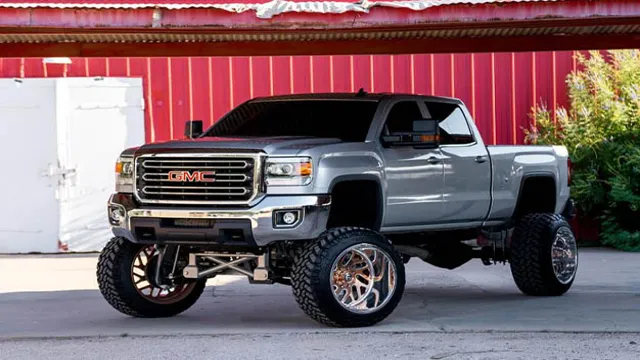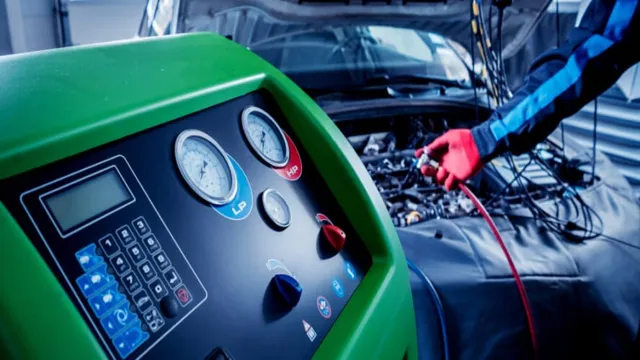Mastering Camber Adjustment on Trucks: The Ultimate Guide to Perfect Alignments
Welcome to our latest post on truck maintenance tips! If you’re an avid truck enthusiast or rely on your truck for work, you know how important it is to keep it in peak condition. One of the critical aspects of maintaining your truck’s performance is understanding how to adjust your truck’s camber. Camber, the measurement of the angle of your wheels in relation to your vehicle’s vertical axis, can have a significant impact on your truck’s handling, stability, and tire wear.
When properly adjusted, it distributes weight evenly across your tires, allowing for a smooth and safe ride. However, when the camber is off, it can lead to uneven tire wear, reduced handling, and even accidents. Adjusting the camber on your truck may seem like a daunting task, but it’s not as complicated as it may seem.
There are several methods to adjust your truck’s camber, depending on your vehicle’s make and model. In this blog post, we’ll explore the basics of adjusting camber on a truck and provide some helpful tips to keep your truck running at optimal performance. So, let’s dive in and learn how to properly adjust your truck’s camber, so you can cruise down the road safely and efficiently!
What is Camber?
If you’re wondering what camber is and how to adjust it on your truck, you’ve come to the right place. Camber refers to the angle at which your vehicle’s wheels sit in relation to the ground when viewed from the front or rear. Too much positive or negative camber can cause uneven tire wear and affect your truck’s handling.
To adjust camber, you’ll need to adjust your truck’s suspension. This may involve replacing worn or damaged parts such as ball joints or control arms. Once you have the necessary parts, you can make adjustments using a camber kit or by using a wrench to loosen and tighten bolts on your truck’s suspension.
It’s best to consult your owner’s manual or a mechanic for guidance on how to adjust camber properly. By taking the time to adjust your truck’s camber, you can ensure a smoother ride and prolong the life of your tires.
Explanation of Camber and its Importance
Camber is a term used to describe the curvature of a vehicle’s wheels and the surface of the road. It’s the angle that is formed between the vertical axis of the wheel and the imaginary line drawn through the center of the wheel. Camber varies based on the needs of the vehicle.
For example, racing cars generally have a negative camber, meaning the top of the wheels tilt inward toward the car. The reason for this is to increase stability during turns at high speeds. On the other hand, consumer vehicles typically have a positive camber, meaning the top of the wheels tilt outward.
This is done to increase stability when driving in a straight line. Camber is an essential factor in ensuring your car’s safety and performance. Incorrect camber can cause uneven tire wear, reduced traction and stability, and increased stopping distance, leading to an accident.
Therefore, it’s crucial to ensure that your vehicle’s camber is properly adjusted and maintained to ensure optimal performance and safety.

Tools Needed
When it comes to adjusting the camber on your truck, you’ll need a few tools to get the job done right. First and foremost, you’ll need a camber gauge to measure the angle of your truck’s wheels. This gauge will help you determine how much adjustment is needed and in which direction.
You’ll also need a jack stand to raise your truck off the ground, and a socket wrench or torque wrench to loosen and tighten bolts on your suspension system. In addition to these tools, you may also need a ball joint separator or tie rod puller to help remove the parts you need to adjust your camber. It’s important to have the right tools for the job to ensure that you can make accurate adjustments and avoid damaging your truck or its suspension system.
If you’re not sure which tools you need or how to use them, don’t hesitate to consult with a mechanic or professional technician. They can provide guidance and advice based on their experience and expertise, and help ensure that your truck’s camber is properly adjusted for optimal performance and stability on the road. With the right tools and support, adjusting the camber on your truck can be a simple and straightforward process.
List of Required Tools
When it comes to woodworking projects, having the right tools is crucial for a successful outcome. Here’s a list of the essential tools you’ll need to get started: Power drill – A good power drill is indispensable for drilling holes, driving screws, and even sanding and grinding.
Circular saw – This is a versatile tool for cutting straight lines or curves in wood, and can be used for a wide range of projects.
Jigsaw – Perfect for more intricate cuts, this tool is ideal for cutting shapes and curves in wood. Table saw – A table saw can make fast and precise cuts in wood, and is great for ripping boards or cutting large sheets of material.
Miter saw – If you need to make angled cuts, a miter saw is the perfect tool. It’s great for crown molding, picture frames, and other decorative projects.
Handheld sander – For finishing touches, a handheld sander is a must-have. It can smooth out rough spots and create a polished, professional look.
Clamps – When it comes to holding pieces of wood together while you work, clamps are essential. They come in various sizes and styles to suit different projects.
Preparation Before Adjusting Camber
If you’re looking to adjust the camber on your truck, there are a few steps you should take to prepare before you start. Firstly, you’ll want to make sure you have all the necessary tools and equipment on hand. This includes a camber gauge, a jack, jack stands, wrenches, and a torque wrench.
Once you have everything ready to go, you’ll want to make sure your truck is on a level surface so that the gauge can accurately measure the camber angle. It’s also a good idea to take note of the current camber angle before you make any adjustments. This will allow you to track your progress and ensure you’re getting the results you want.
Finally, make sure you consult your truck’s manual or a trusted mechanic to ensure you’re making the right adjustments for your specific make and model. By taking these steps, you’ll be well on your way to successfully adjusting your truck’s camber and improving its overall performance.
Steps to Follow Before Making Adjustments
Before making any adjustments to your car’s camber, it’s crucial to prepare properly. One of the essential steps is to examine your car’s tires for any signs of wear and tear and ensure that they are inflated to the correct level. It is also necessary to verify that the suspension and steering systems are in good working order and there are no loose or worn-out components.
It’s important to note that adjusting the camber can have a significant impact on your car’s handling, so it’s crucial to have a clear understanding of what you want to achieve before making any changes. A professional wheel alignment service can help you determine the optimal camber settings for your car’s specific make and model. By taking these steps before adjusting camber, you’ll ensure a safe and effective adjustment that will enhance your car’s performance on the road.
How to Adjust Camber on a Truck
If you’re feeling some bumps and thumps while driving your truck, it might be time to adjust the camber. Camber refers to the angle of your vehicle’s wheels, which can significantly affect how your truck handles on the road. Adjusting camber can help improve your truck’s traction and handling.
To adjust camber on a truck, you need to loosen the bolts that attach the wheel assembly, adjust the camber angle, and then re-tighten the bolts. It’s essential to check your truck’s manufacturer’s guidelines to ensure that you’re adjusting the camber correctly. Remember that the perfect camber setting varies by the intended use of the vehicle.
For example, a truck designed for off-roading would require a different camber angle than a truck built for the racetrack. In any case, make sure to get a professional alignment if you’re not confident in performing the adjustment yourself. With these tips, you can adjust your truck’s camber and enjoy a smoother, safer ride.
Step-by-Step Instructions
Adjusting camber on your truck might sound like a daunting task, but with a few simple steps, it can be done easily. Before you start, make sure that your truck is on level ground and that the wheels are straight. The first step is to remove the wheel from the truck.
Once you have the wheel off, locate the upper and lower control arms. These are the arms that hold the wheel in place. The bolt that connects these arms needs to be loosened so that the arm can be moved.
Now, you can use a camber gauge to measure the angle of the wheel. If the camber is incorrect, you can move the control arm to adjust the angle. Tighten the bolts and recheck the camber.
Repeat until the camber is correct. Once you have adjusted the camber, put the wheel back on and repeat the process on the other wheel. Proper camber adjustment can improve the handling and tire wear of your truck.
With a little know-how, you can do it yourself and save money at the mechanic.
Test Drive and Adjustments
If you’ve taken your truck for a test drive and noticed that it’s pulling to one side or the tires are wearing unevenly, it may be time to adjust the camber. Camber refers to the angle of the tires in relation to the road, and it can affect your vehicle’s handling, stability, and tire wear. To adjust camber on a truck, you’ll need to measure the current camber angle and make adjustments using a camber kit or shim.
It’s important to make careful adjustments and test drive the vehicle to ensure that the camber is within manufacturer specifications. Otherwise, you may experience problems with tire wear, handling, or alignment down the road. By understanding how camber affects your vehicle and taking the time to make precise adjustments, you can ensure a smoother, safer ride.
How to Test Drive and Make Final Adjustments
When it comes to making final adjustments to your vehicle, a test drive is crucial. Test driving your car is the best way to experience how it handles on the road and to find any issues that need addressing. Before taking your car out for a test drive, do a quick inspection of the vehicle, check the oil levels, tire pressure, and make sure there are no warning lights on the dashboard.
During the test drive, pay attention to how the car accelerates, brakes, turns, and shifts gears. Take note of any unusual noises or vibrations. If you notice any issues, make sure to document them and discuss them with your mechanic.
Once you are satisfied with your test drive, make any necessary adjustments, such as adjusting the mirrors or seat position, before hitting the road. By taking the time to test drive and make final adjustments, you can ensure that your vehicle is running smoothly and safely.
Conclusion
So there you have it, folks! Adjusting camber on your truck may seem like a daunting task, but with the right tools and knowledge, you can tackle it like a pro. Remember to consult your vehicle’s manual and take safety precautions before getting started. And who knows, with a little bit of practice, you might just become the go-to mechanic in your neighborhood.
After all, a skill like adjusting camber can truly bring your truck’s performance to the next level. Just don’t forget to give yourself a pat on the back for a job well done!”
FAQs
What is camber in a truck?
Camber refers to the angle at which the wheels of a truck are tilted in or out from vertical.
How does camber affect truck handling?
Too much positive or negative camber can cause uneven tire wear and affect the stability and handling of the truck.
How do I know if my truck needs a camber adjustment?
Uneven tire wear, pulling to one side, or a crooked steering wheel can indicate the need for a camber adjustment.
Can I adjust camber on my truck myself?
It is possible to adjust camber on some trucks using adjustable camber plates or shims, but it is generally recommended to have a professional mechanic do the adjustment for optimal safety and performance.
How much does it cost to adjust camber on a truck?
The cost of adjusting camber on a truck can vary depending on the make and model of the truck and the location of the repair shop, but it typically falls between $75 and $200.





